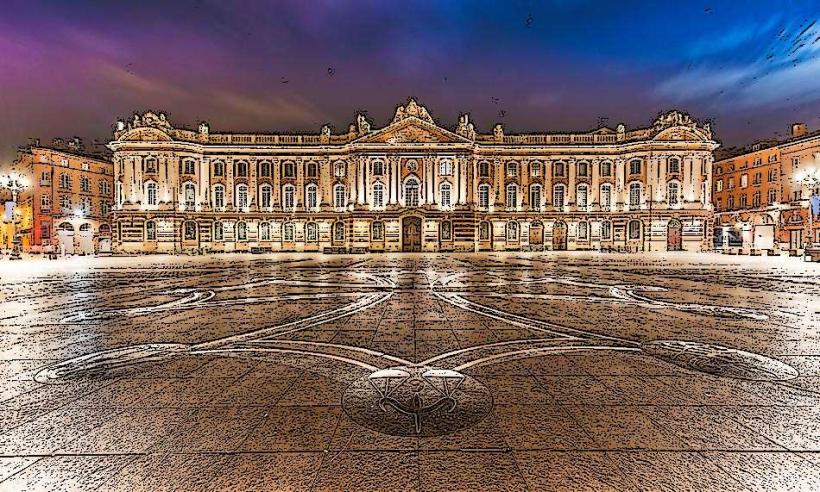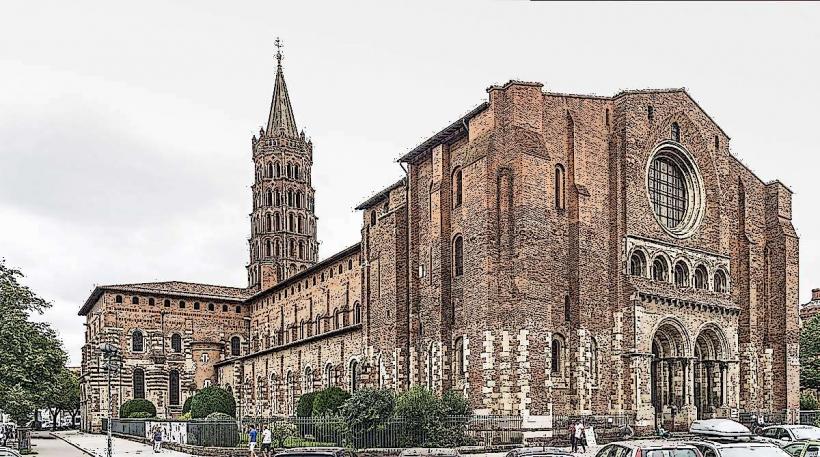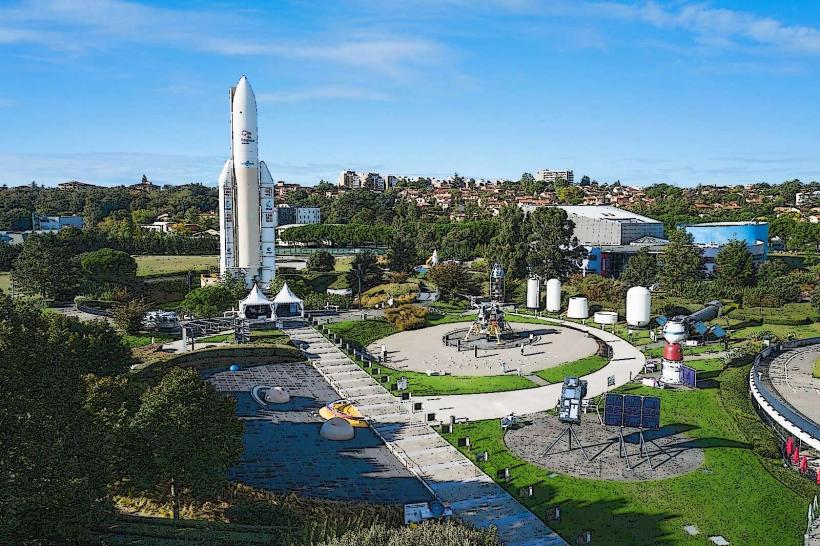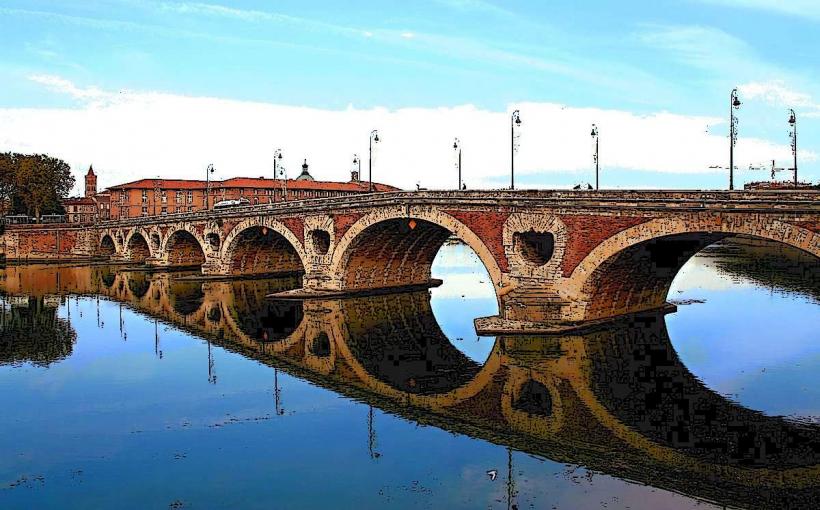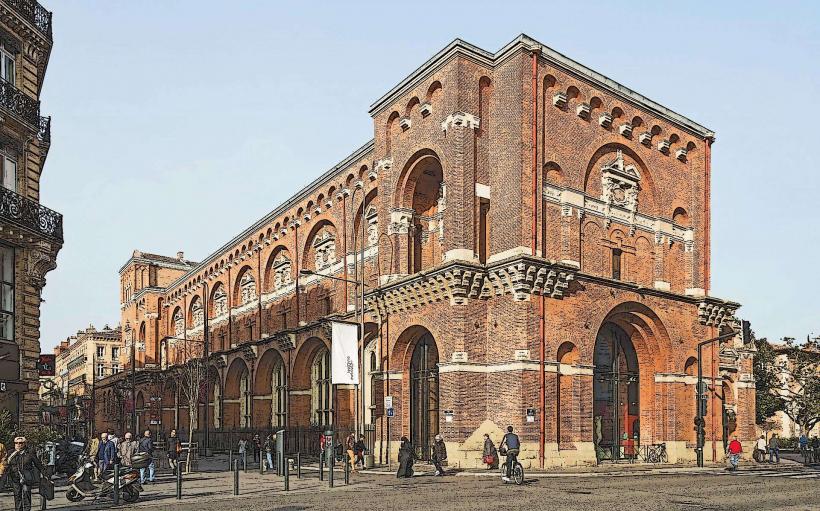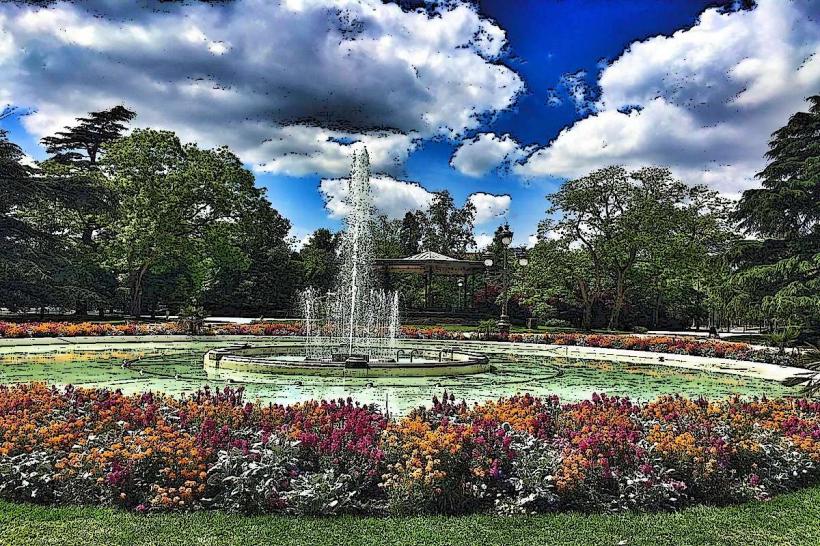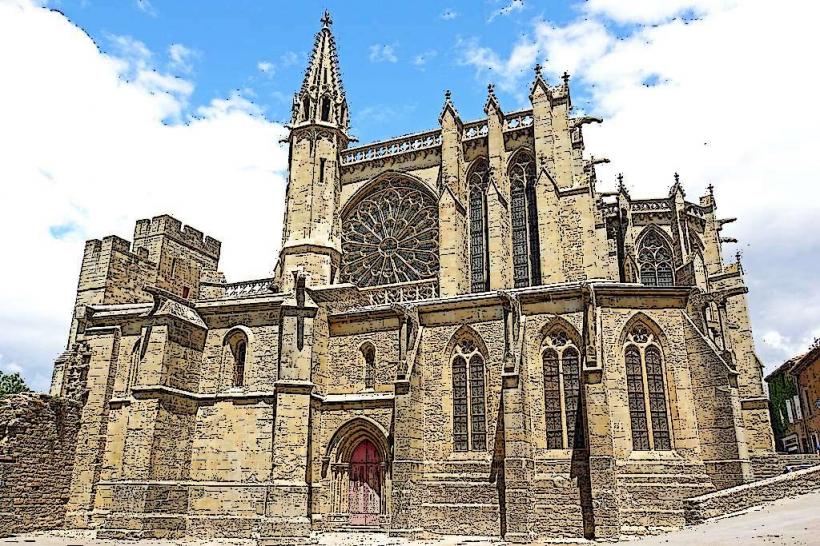Information
Landmark: Carcassonne CastleCity: Toulouse
Country: France
Continent: Europe
Carcassonne Castle, also known as the Cité de Carcassonne, is one of the most well-preserved medieval fortresses in Europe, located in the town of Carcassonne in the Occitanie region of southern France. This fortified city is renowned for its dramatic appearance, towering walls, and historic significance, making it a popular tourist destination and a UNESCO World Heritage Site.
Overview and History
Location: Carcassonne is situated on a hill overlooking the Aude River in the Languedoc region of southern France, near the Mediterranean coast and the Pyrenees mountains.
Historical Significance: The origins of the site date back to the Gallo-Roman period, but the fortress as it stands today was primarily constructed during the 12th and 13th centuries. It was strategically located on the border between France and the Kingdom of Aragon, and its position made it a crucial defensive stronghold during the medieval era. Over the centuries, Carcassonne has been involved in numerous wars, including the Cathar Crusade in the 13th century, and has seen several changes in its architecture.
Restoration: In the 19th century, the fortress was restored by the French architect Eugène Viollet-le-Duc, whose work aimed to return the castle to its medieval glory. Some aspects of the restoration have been debated, but overall, Viollet-le-Duc's work helped preserve the site and solidified its place in history.
Key Features and Attractions
The Medieval Walls
- The most striking feature of Carcassonne Castle is its extensive fortifications. The fortress is surrounded by two sets of concentric walls, with 53 towers scattered along the perimeter. The inner wall, called the Cité, houses the historic town, while the outer wall, known as the Fortifications, served as an additional defensive layer. These fortifications create a sense of dramatic scale and a perfect example of medieval military architecture.
The Narbonne Gate
- One of the main entrances to the fortress, the Narbonne Gate (Portes Narbonnaise), is a stunning example of Gothic architecture. The gate is flanked by massive towers and has a drawbridge and a fortified walkway. It is often the first point of entry for visitors to the castle and gives an impression of the strategic importance of the site.
The Château Comtal (The Count's Castle)
- The Château Comtal is the central part of the fortifications, housing a medieval castle within the walls. This fortified palace was once the residence of the Viscounts of Carcassonne and is now a museum that showcases the history of the site, its military architecture, and artifacts from the medieval period. Visitors can explore its courtyards, towers, and rooms, as well as the museum exhibits that describe the castle's military past.
Basilica of Saint-Nazaire
- Located within the walls of the medieval citadel, the Basilica of Saint-Nazaire is a striking Gothic and Romanesque church. It has stained glass windows dating back to the 13th century, which depict biblical scenes, and its tower offers excellent views of the surrounding region.
The Drawbridge and Moat
- The castle’s drawbridge and moat provide insight into the defensive capabilities of the fortress. The moat was once filled with water and acted as a barrier to invaders, while the drawbridge could be raised or lowered depending on the need for protection. Visitors can walk through the castle gates, cross the drawbridge, and experience the impressive defenses up close.
The Ramparts and Towers
- The ramparts of Carcassonne Castle offer panoramic views of the surrounding countryside, with vistas over the Aude River and the town below. The towers, including the Tour de la Justice and Tour de la Trésorerie, are among the best-preserved elements of the fortress and can be climbed for even better views of the area. These towers were used for both defensive and administrative purposes during the medieval period.
Medieval Museum and Exhibits
- Within the castle complex, there are several museums and exhibits dedicated to the history of Carcassonne and medieval life. The Museum of the History of Carcassonne and the Museum of the Middle Ages provide insight into the lives of those who lived within the walls and the events that shaped the fortress.
Carcassonne’s Old Town (La Cité)
- The fortified city of Carcassonne itself is a remarkable place to explore, with its cobblestone streets, medieval buildings, and shops selling traditional crafts and local goods. The town has a lively atmosphere, and visitors can enjoy walking through its narrow alleys, browsing boutiques, and enjoying local cuisine in restaurants with picturesque views of the castle.
Key Historical Events
Cathar Crusade: One of the most important events in the history of Carcassonne was its involvement in the Cathar Crusade. The Cathar heresy, which was opposed by the Catholic Church, led to a siege in 1209, when the city was taken by forces loyal to the Pope. The fortress played a key role in the siege and the subsequent consolidation of Catholic rule in the region.
French Revolution: During the French Revolution in the late 18th century, many of Carcassonne's fortifications were dismantled, but the castle managed to survive, thanks to its military importance. The fortress was later restored in the 19th century.
World War II: Carcassonne Castle was used for defensive purposes during World War II, and its strategic location played a role in protecting the region from occupation by German forces.
Visiting Carcassonne Castle
Opening Hours: Carcassonne Castle is open to the public year-round, though the hours may vary depending on the season. It's advisable to check ahead for specific opening times, especially for holidays and festivals.
Entry Fees: There is an entry fee for visiting the Château Comtal and the fortifications. Ticket prices vary based on age and the type of visit (guided tours, family tickets, etc.).
Accessibility: The site is relatively accessible, though the cobblestone streets and steps may be challenging for those with mobility issues. The best way to explore the fortress is on foot, as the site is extensive and filled with fascinating historical details.
Nearby Attractions: Carcassonne is also known for its charming town and beautiful Aude River. Visitors can enjoy a boat ride along the river, explore local vineyards, or visit nearby Canal du Midi.
Conclusion
Carcassonne Castle is a breathtaking example of medieval fortification and architecture, steeped in history and offering a fascinating look into the past. Whether you’re exploring the walls, strolling through the old town, or enjoying the panoramic views from its towers, Carcassonne Castle offers an unforgettable glimpse into France’s medieval heritage.

